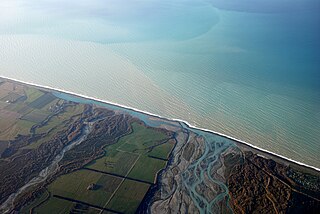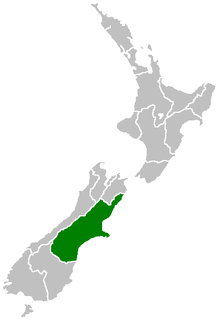
New Zealand is divided into sixteen regions for local government purposes. Eleven are administered by regional councils, and five are administered by unitary authorities, which are territorial authorities that also perform the functions of regional councils. The Chatham Islands Council is not a region but is similar to a unitary authority, authorised under its own legislation.
Sir Thomas Kerry Burke is a former New Zealand politician and Speaker of the New Zealand House of Representatives. He was a Member of Parliament for the Labour Party from 1972 to 1975 and again from 1978 to 1990, and later served twelve years on Canterbury Regional Council from 1998 to 2010.

Triennial elections for all 74 cities, districts, twelve regional councils and all district health boards in New Zealand were held on 9 October 2004. Most councils were elected using the first-past-the-post method, but ten were elected using the single transferable vote (STV) method. It was the first time that the STV method was available; the change came through successful lobbying by Rod Donald.
Alexander George Neill is a former New Zealand politician. He was a Member of Parliament for the National Party on three non-consecutive occasions between 1990 and 2002 and was later a member of the Canterbury Regional Council from 2003 until 2010.

The Rakaia River is in the Canterbury Plains in New Zealand's South Island. The Rakaia River is one of the largest braided rivers in New Zealand. The Rakaia River has a mean flow of 203 cubic metres per second (7,200 cu ft/s) and a mean annual seven-day low flow of 87 m3/s (3,100 cu ft/s). In the 1850s, European settlers named it the Cholmondeley River, but this name lapsed into disuse. The name Rakaia comes from Māori "Ō Rakaia", meaning the place where people were arranged by ranks

Selwyn District is a predominantly rural district in central Canterbury, on the east coast of New Zealand's South Island. It is named after the Selwyn River / Waikirikiri, which is in turn named after Bishop George Selwyn, the first Anglican bishop of New Zealand who, in 1843 and 1844, travelled the length of the country by horse, foot, boat and canoe, leaving in his wake a sprinkling of locations that now bear his name.

Nicola Joanne Wagner is a New Zealand teacher, businesswoman and politician. She represented the Christchurch Central electorate for the New Zealand National Party in the New Zealand Parliament.

Otago Regional Council (ORC) is the regional council for Otago in the South Island of New Zealand. The council's principal office is Regional House on Stafford Street in Dunedin with 250-275 staff, with smaller offices in Queenstown and Alexandra. They are responsible for sustainably managing Otago’s natural resources of land, air and water on behalf of the community. Property owners pay rates to both the local and regional councils. In June 2022 the council approved an annual plan of $109m for 2022-2023 with an 18% rates rise.

The Hurunui River is the fourth largest of the four principal rivers in north Canterbury, New Zealand, with a catchment area of 2,670 square kilometres (1,030 sq mi). The river flows from the eastern side of the Southern Alps, to the Pacific Ocean.

Central Plains Water, or, more fully, the Central Plains Water Enhancement Scheme, is a large-scale proposal for water diversion, damming, reticulation and irrigation for the Central Plains of Canterbury, New Zealand. Construction started on the scheme in 2014.

Sir Robert John Parker is a former New Zealand broadcaster and politician. He served as Mayor of Christchurch from 2007 to 2013.
This is a timeline of the Central Plains Water Enhancement Scheme.

Brendon Burns is a New Zealand former journalist and politician. He was elected as a Labour Party Member of Parliament in the Christchurch Central electorate from 2008 until 2011.

The 2010 New Zealand local elections were triennial elections to select local government officials and district health board members. All elections are conducted by postal ballot, with election day being Saturday 9 October 2010.

The 2010 Christchurch mayoral election is part of the 2010 New Zealand local elections. On 9 October 2010, elections were held for the Mayor of Christchurch plus other local government roles. Incumbent Bob Parker was re-elected.

Water pollution in Canterbury, New Zealand has become a major environmental issue, largely due to pollution from agricultural sources, but also industrial and urban sources.

Deon William Swiggs is a New Zealand politician serving as the Environment Canterbury Councillor representing the Christchurch West/Ōpuna Regional Constituency. He previously served as the Christchurch City Councillor representing the Central ward from 2016 to 2019. Prior to Swiggs being elected, he was most well known for his participation in Rebuild Christchurch, an organisation founded after the 2010 Canterbury earthquake.

The 2022 New Zealand local elections were triennial elections held in New Zealand on Saturday 8 October 2022. Voting began by postal vote on 16 September and ended at noon on 8 October 2022.
The 2022 Christchurch local elections were held via postal voting between September and October 2022 as part of the wider 2022 New Zealand local elections. Elections in Christchurch covered one territorial authority, the Christchurch City Council, and six community boards.

Ngoc-Lan Thi Pham is a New Zealand politician and ecologist. She was a regional councillor for Environment Canterbury for six years and was elected to Parliament as a Green in the 2023 New Zealand general election.


















